[ page 2 ]
AVRO Vulcan in 1/72 scale: modelling the old Airfix kit
... continued from page 1....
page 2
The second old Airfix Vulcan kit was made for a Vulcan B.2 "XM597" as used during the Falklands War in the "Black Buck" missions. Mission "Black Buck 6" was flown on 2-3 June 1982, so 40 years ago.
FALKLANDS WAR
In the Spring of 1982 the Argentinians occupied the British Territory Falkland islands and South Georgia in the South Atlantic from April 2, 1982. The military junta had claimed sovereignty over the "Malvinas" for many years This was unacceptable by the British so quickly armed forces of the Royal Navy, Army and Airforce were dispatched to regain the islands. The conflict lasted some 74 days until June 14, 1982.
For more Falklands War information, look at the Wiki pages... [external link]
The Royal Air Force modified quickly 5 Vulcans for strike missions for Operation Corporate: XM597, XM598, XM607, XM612 and also XL391 (that was a spare). The "Black Buck" raids would be flown from Wideawake airfield on the tiny Ascension island near the equator between South America and Africa.
Vulcans and Victor tankers in support were deployed to Ascension island. VC-10's delivered missiles to Wideawake. The Vulcans would drop bombs, others were to fire anti-radar Shrike missiles. Two special wing pylons were quickly "home made" at RAF Waddington: a shallow pylon on starboard that could carry a pair of Shrikes but also optionally an AN/ALQ-101 ECM pod; at port, a slightly larger wing pylon that also could carry a pair of Shrikes. Also a better inertial navigation was installed that also meant a large blade antenna was fitted on the aerial plate on the starboard engines.
From Ascension island between Brazil and Africa to the Falklands is an incredible 6,300 km to the South:
Mission "Black Buck 6" was flown on 2-3 June with Vulcan "XM597" armed with 4 Shrike missiles to destroy Argentinian radars near Stanley. The two wing pylons of the Vulcan were thus fully occupied with 4 Shrikes and so during this mission "XM597" did not carry an external ECM pod. During the mission several refuelling meet-ups with Victor tankers were required while on route to the South. Near the Falklands airfield at Stanley, "XM597" loitered over the target for 40 minutes in an effort to engage the enemy AN/TPS-43 radar, which was not switched on. Finally, the crew fired 2 of the 4 Shrikes, which destroyed a nearby Skyguard radar.
On its return flight "XM597" its in-flight refuelling probe broke that was essential to refuel and to return to Ascension island. So the aircraft was forced to divert to Rio de Janeiro, Brasil. One of the remaining Shrikes was ditched into the ocean, but the other remained stuck on the pylon and could not be released. Sensitive documents containing classified information were jettisoned into the sea via the crew hatch.
A "Mayday" signal was sent. Two Brazilian Northrop F-5E Tiger II fighters from 2° Esquadrão do 1° Grupo de Aviação de Caça were scrambled from Santa Cruz Airfield and intercepted the Vulcan. The Vulcan was cleared to land at Rio de Janeiro Galeão Airport by Brazilian authorities with almost no fuel remaining. This was a potentially embarrassing international incident, as it revealed that the United States had supplied the British with Shrike missiles. British diplomats negotiated for the release of the Vulcan and its crew. A deal was struck whereas the Vulcan would not be deployed again. It seems that a big factor was that the Pope would visit Brasil end of June 1982 and would land at Galeão, so the Vulcan was to "disappear quickly" as it was parked nearby the arrival stand. A new refuelling probe was fitted there, and the aircraft flew back to Waddington on 13 June 1982. The single left Shrike missile remained in Brazil.
> Source: Wikipedia [external link]
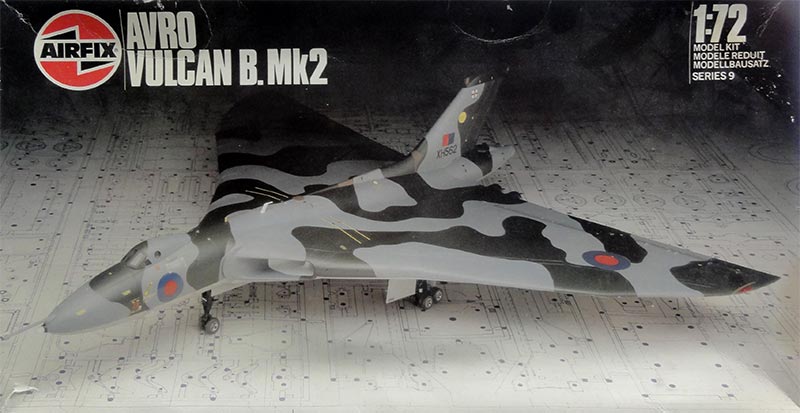
Back to the kit:
The old 1/72 Airfix model was assembled very similar as described above, and for this B.2 no extra modifications are needed: so retain the Olympus 301 "short" exhausts, "square-ish" tail fin end, nose TFR and tank boom as per kit.
Note: do not drill open the indicated wing holes for "Black Buck" Vulcan like "XM607" as the pylons are entirely situated at a correct location as per kit, see page 1.
In 1/72 4 Shrike anti-radar station missiles with adapters and the 2 pylons can be found in an after market "Harrier HR05" casted metal set. The kit pylons #81 and #86 were replaced with the better cast metal ones though kit parts can be used.
Tip: if you want to install the AN/ALQ-101 ECM pod, the ECM pod can be found e.g. in a 1/72 Airfix Buccaneer kit or Italeri Jaguar kit; but for this model was not needed as it would be fitted with 2 pairs of Shrike missiles only.
This model would get a closed crew entry hatch and closed bomb bay. So all was glued closed and strips inside helped to get flush joints. Note also the nose weight added here.
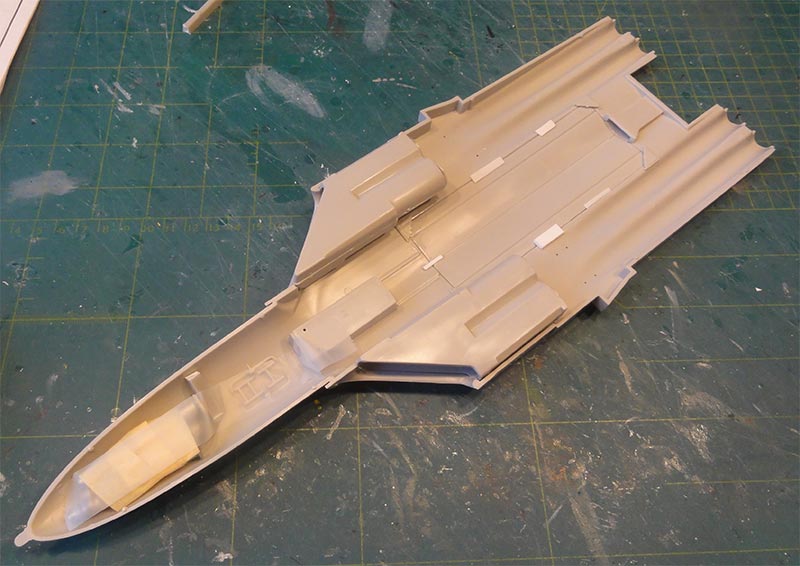
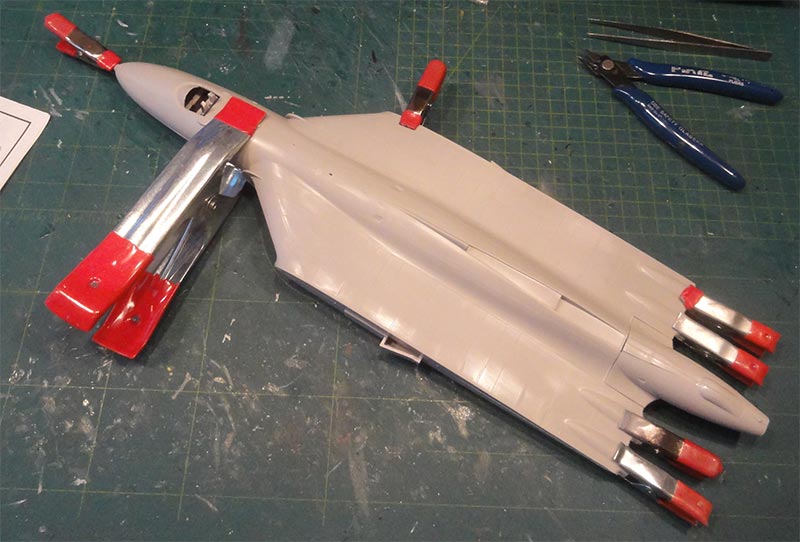
Again putty and sanding is needed as described on the first Vulcan kit made on page 1....
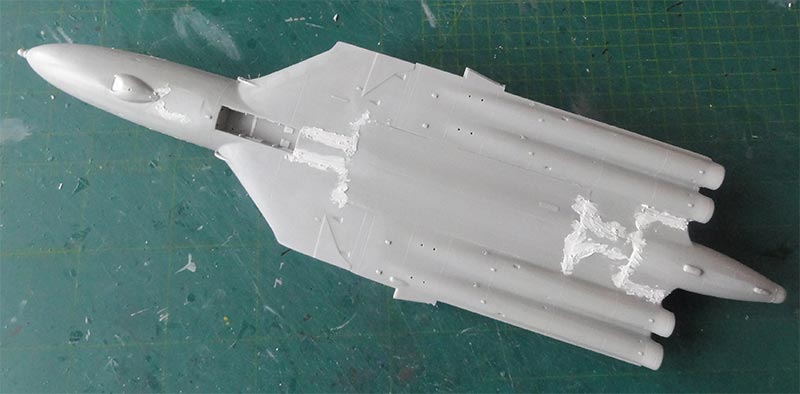
The kit Olympus 301 exhausts will get internal closures later on.
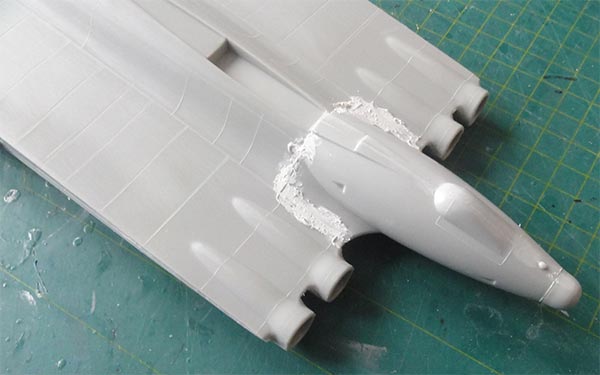
For the cockpit, the similar preparations were done. Note here that the "red steer" TFR knob is seen on the nose:
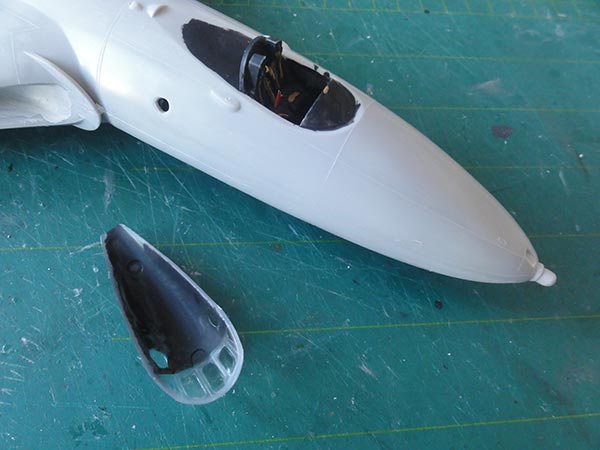
The standard vertical tail with the moulded ECM fairings on top was set and puttied. The model got the base grey coat airbrushing Revell Aqua 75.
The old Airfix kit has the needed pylons. The starboard pylon is the shallow/ smaller one, the port pylon the bigger pylon. But the casted metal pylons from the "Harrier set" for Black Buck look better and were installed. These pylons are to be re-positioned at a slightly different position so not as per kit instructions: their centerlines should be set about 101 millimeters from the bomb doors panel #64 center line.
Outside of each main gear bay, on the lower kit wing 2 small blisters are seen for the Skybolt mounting with a small blister situated more aft. (the tiny blister in front of the Skybolt ones is a coolant blister and retained). Blisters were removable covers and removed when pylons were installed. I sanded all flat and set the new pylons at the correct station.
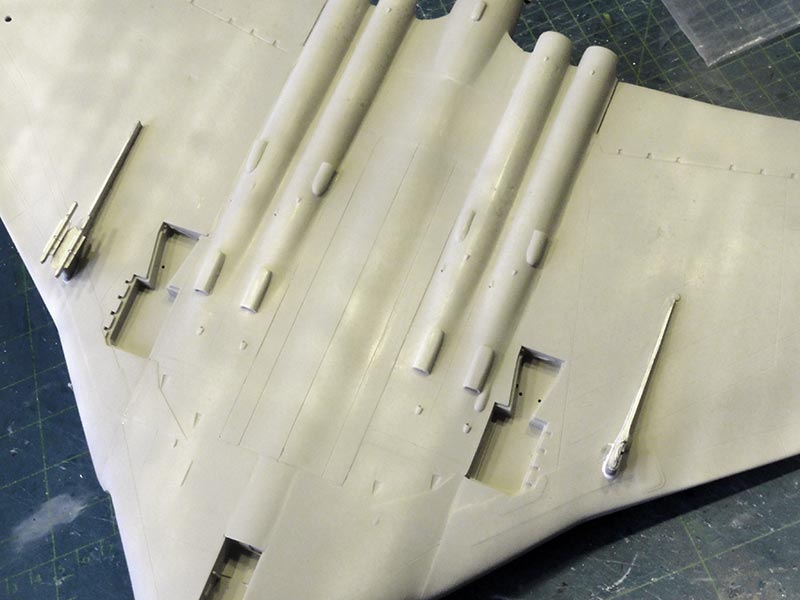
The shallow pylon should be set on the lower starboard wing:
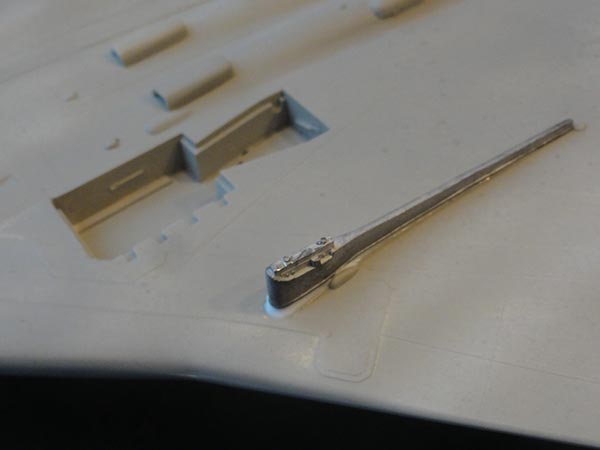
... and the port pylon:
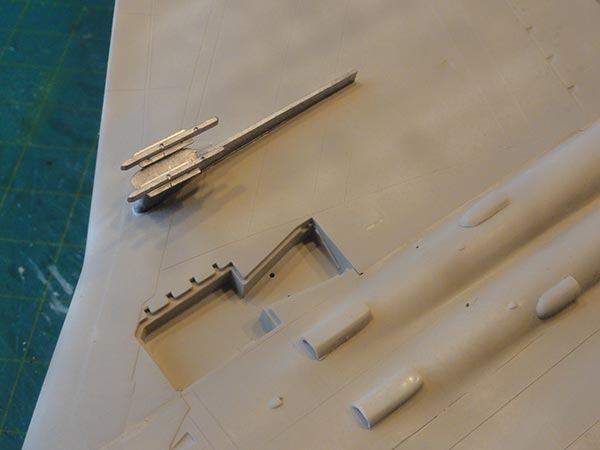
The undercarriages will be set later on, first the camouflage scheme would be applied.
The lower surfaces of the "Black Buck" Vulcans were wide brush hand painted by the squadron in the U.K. The lower colour was BSC 638 dark sea grey, except some stencils and warning panels. This paint was not consistently applied and e.g. the serial on the nosewheel door could be seen through the paint. Any squadron/ units markings were overpainted before the Black Buck missions.
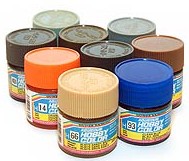
For "Black Buck" Vulcan "XM597" the colours are:
-lower surfaces: BSC 638 dark sea grey airbrushing Gunze Sangyo 331 acrylic; this needs no even coverage as on the real aircraft it was "hand brushed".
Mask the lower edges and than...
- medium sea grey BSC 637 airbrushing Gunze Sangyo 335;
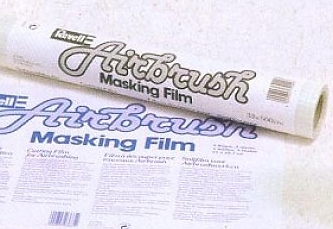
Mask the standard Vulcan camouflage pattern, these are hard bordered. I used Revell masking film here and drew the pattern on the film with a marker. It took quite some time to set the masks on the model.
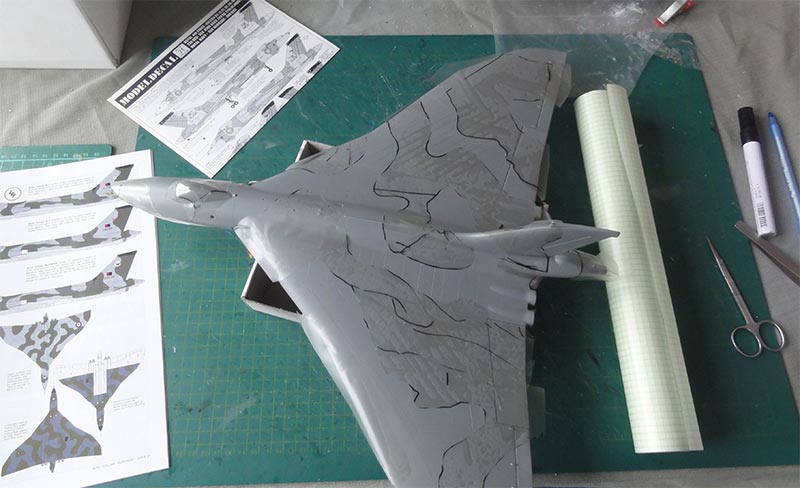
All was cut out and set onto the upper surfaces, followed by airbrushing the "dark green" BSC 641 airbrushing Gunze Sangyo 330 acrylic paint.
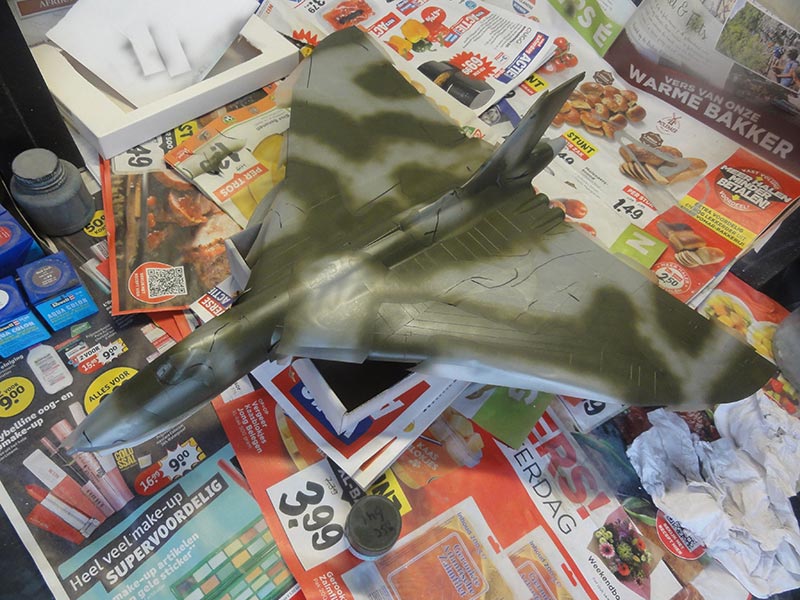
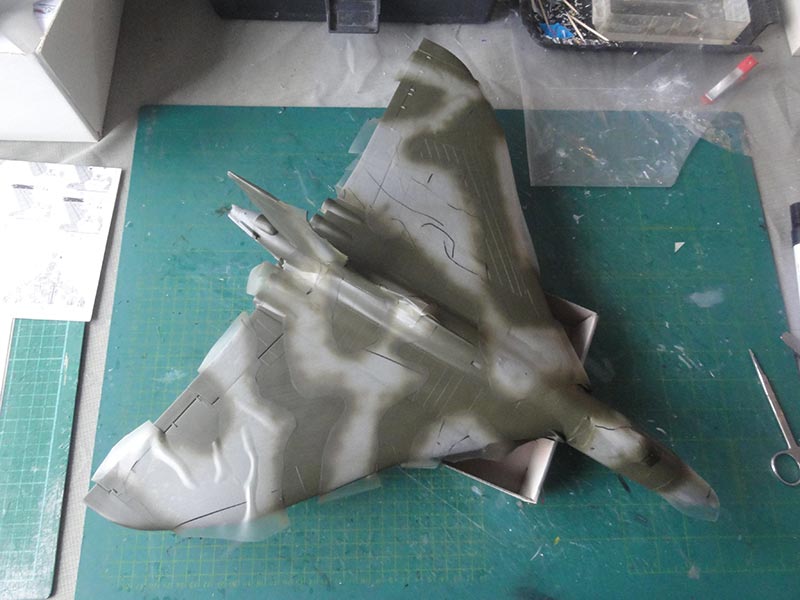
... and the result with masking film removed... note hard outlines.
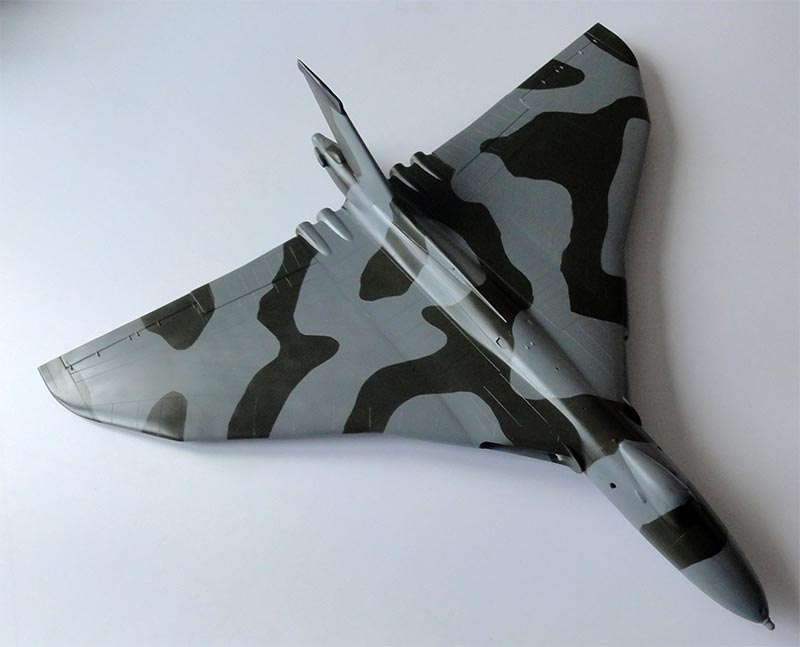
After that was done and masking tape removed, the model was polished with polishing paste (such as Tamiya polish or any other brand) and cleaned up under the water tap.
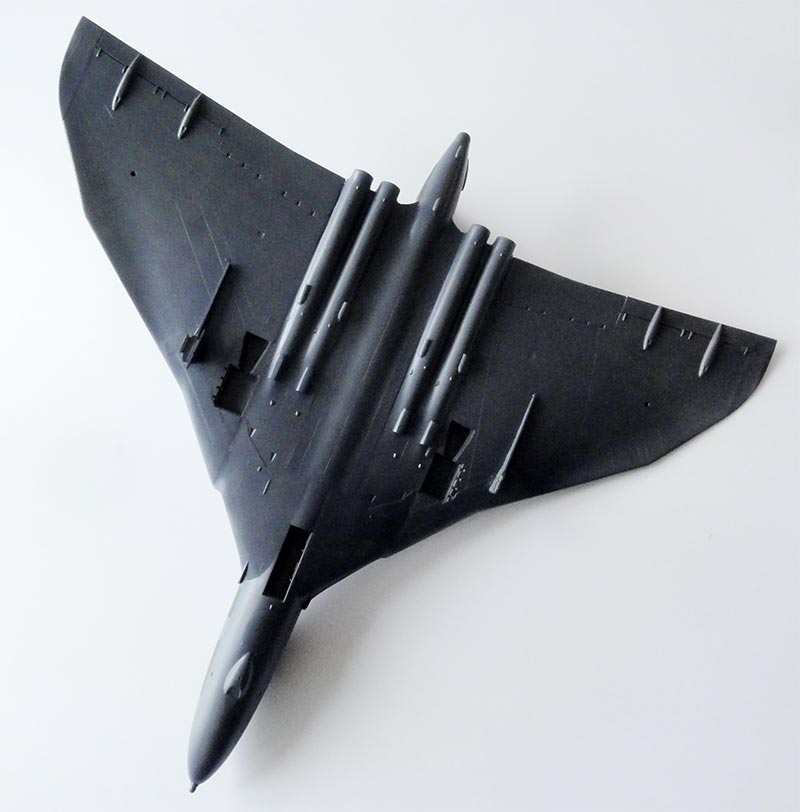
The wheel bays still need to be painted. I was unsure about the appropriate gear bay colours for "XM597", but assumed these internal bays were still "off white" or very light grey as on the other Vulcans with some details of hydraulics in metal.
Next it got several layers of gloss varnish before starting with decalling. This will avoid any decal "silvering". I airbrushed Johnson Pledge/ Future acrylic varnish.
The decals for "XM597" came from mainly the old Modeldecal set 71 and stencilling from the Airfix kit decals. Some extra stencilling was added as well. It has the later style RAF roundels.
The various Vulcan "mid brown coloured" panels were painted as was the nose "red steer" TFR knob with a brush in Revell Aqua 17 "braun".
The jet exhausts were painted dark metal. Inside the jet exhaust pipes, which are open in the kit, flexible plastic was pushed to avoid complete see through inside the fuselage. All was painted black inside the jet pipes.
The landing gears with mainly black struts were installed as described for the first made Vulcan model.
STEP 15 deals with the various antennas and aerial panels and installment depends on the particular Vulcan desired. First, the long tubes #91 - 94 were installed on to the jet pipes fairings after these had been painted in metal. Regarding the flat panels, I could not clearly see what was fitted on "XM597" but followed the Airfix instructions and fitted both aerial counterpoise panels #96, 100. The large blade antenna #98 was replaced by a thinner one.
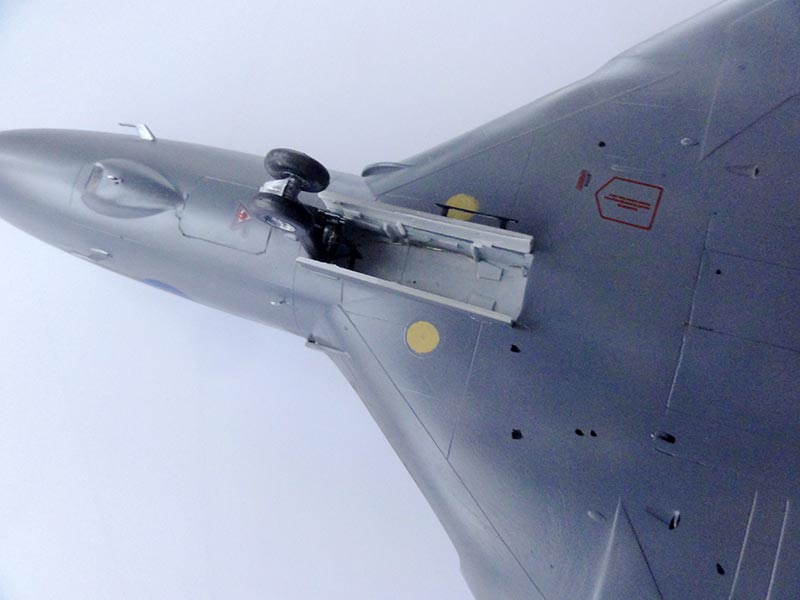
The landing lights, pitots and so one on the nose were handled as described earlier. The tank boom #108 was fitted as well and painted and with a metallic tip. The spine antennas #104 and #105 were replaced by a finer scrap made ones as was the antenna #101 below the doppler radar nose. On the rear fuselage, small bits on the fairing for the ECM system were added. Three wind screen wipers were set at the cockpit front wind shield.
The 2 pairs of Shrike missiles for this "Black Buck 6" mission were in the "Harrier" casted metal set with their carriers. These were painted first white; than though not sure if appropriate at this strike mission, on the missiles were painted some random black "zebra" stripes.
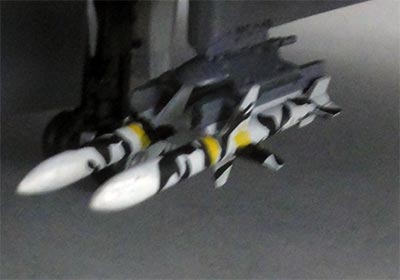
All was fixed with super glue and make sure to have a symmetric installment.
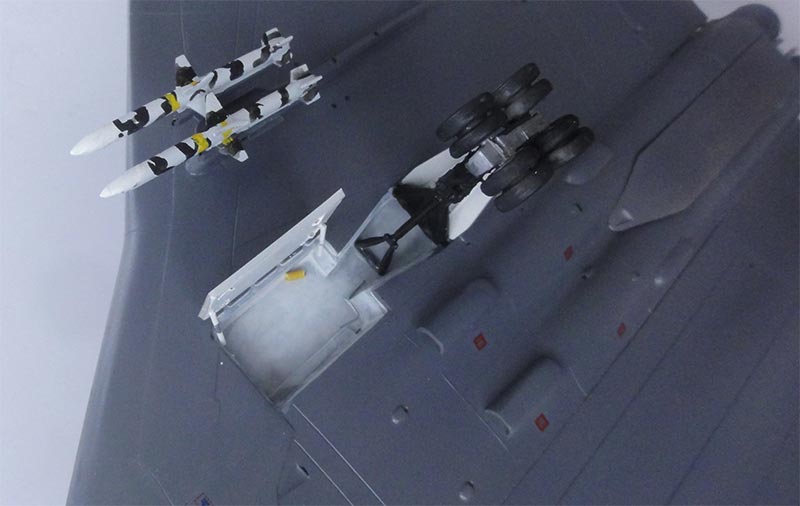
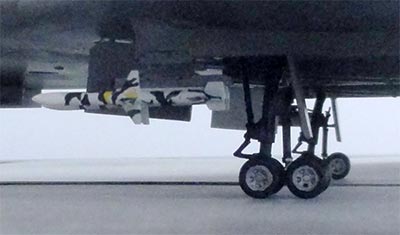
At the front areas of the upper B.2 wing some later service Vulcans had two rows of 6 + 10 tiny of what seem to be re-enforcement/ inspection lugs at in 1/72 5 mm separation distance on each mid span upper wing side. Also 5 were set between both tail pipes as described earlier.
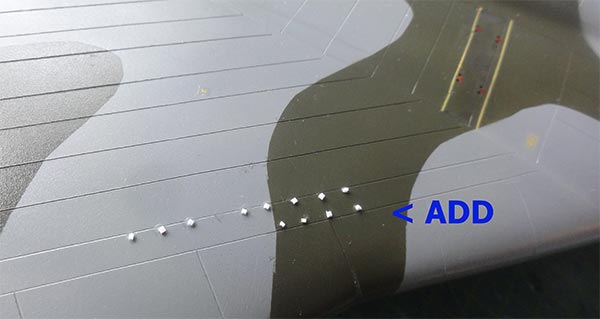
... and at the rear...

(NOTE: it seems that Black Buck Vulcans had a few vortex generators also installed near the canopy but I could not see clear photos).
The vortex generators were painted in the surrounding camouflage colours with a tooth pick.
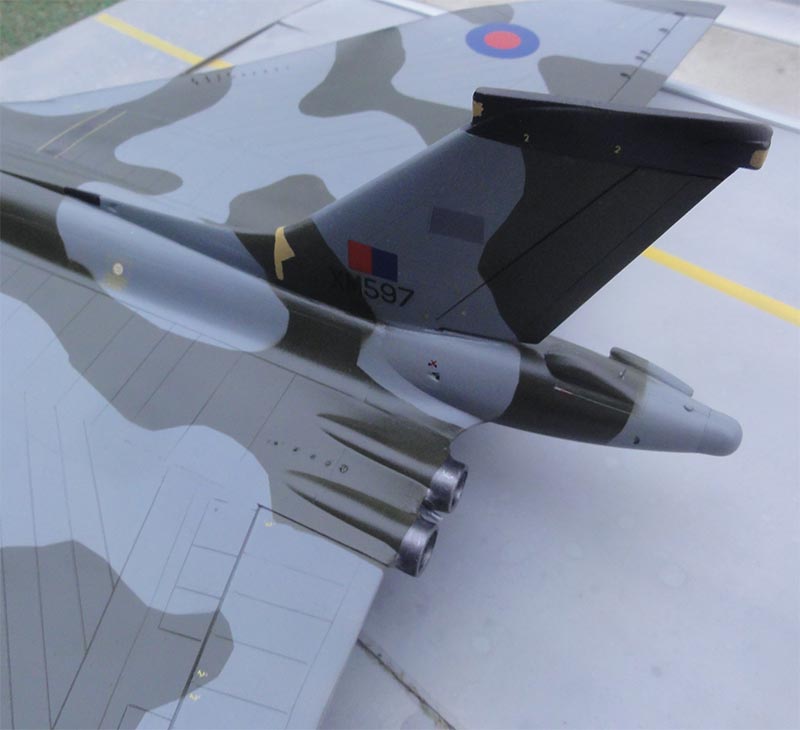
With a pencil, some lines were drawn e.g. at bomb bay doors, smaller panels etc. Some wash was applied in recesses such as in the flying controls edges and the model got a gloss varnish coat. This protects the decals and gives an even shine.
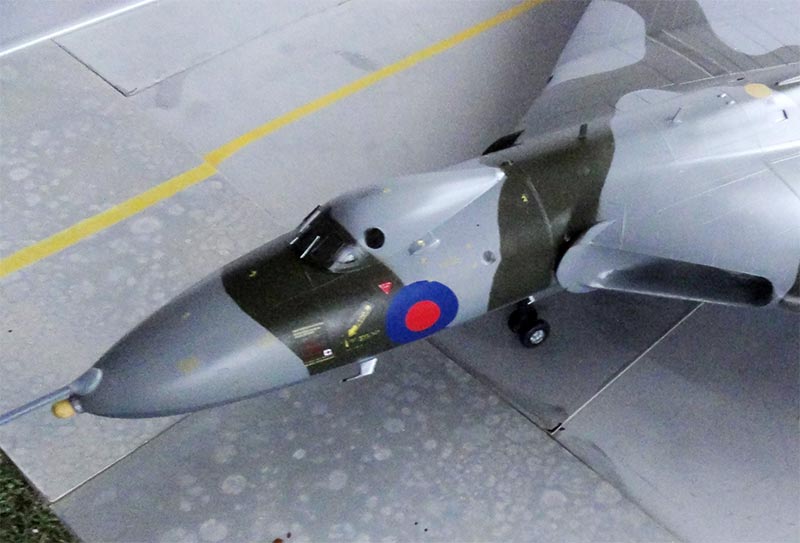
That's it!
A view of the lower model surfaces:
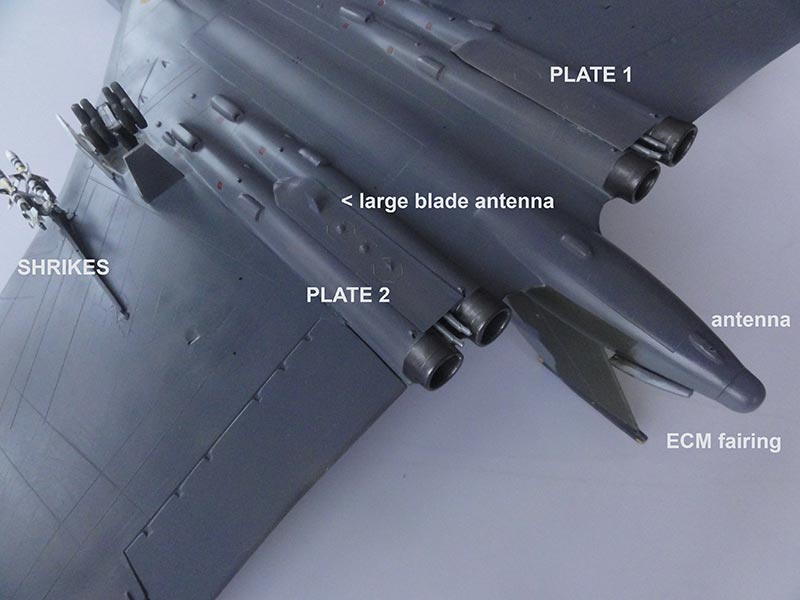
Vulcan "XM597" as used during the "Black Buck 6" mission as flown on 2 - 3 June 1982 from Ascension island to Stanley at the Falklands.
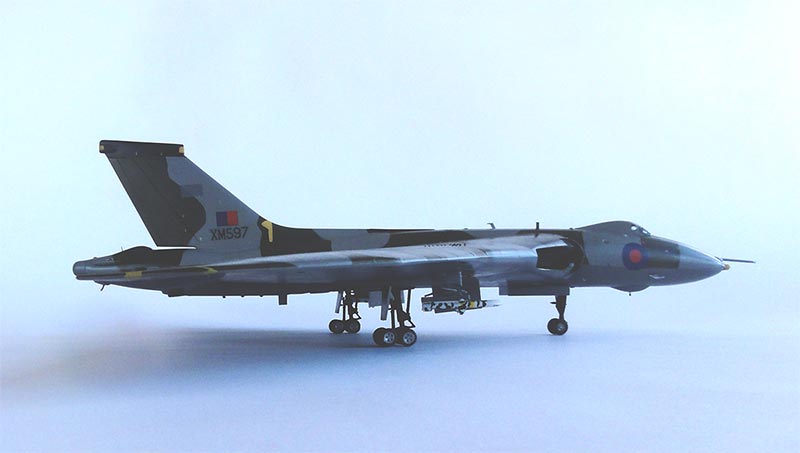
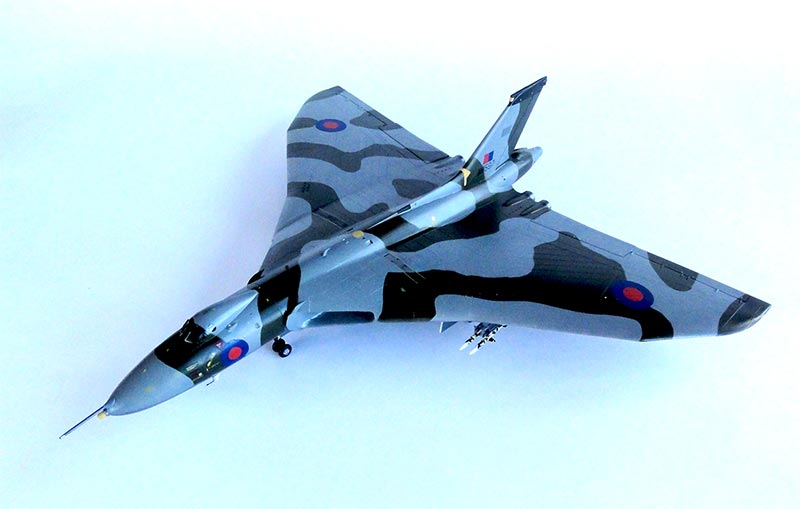
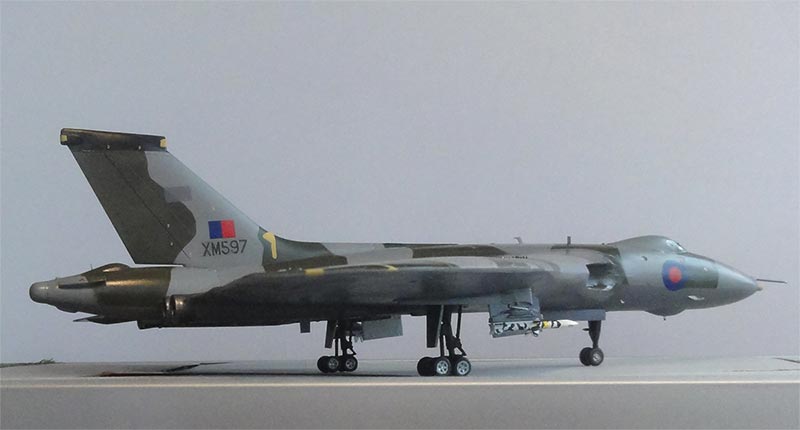
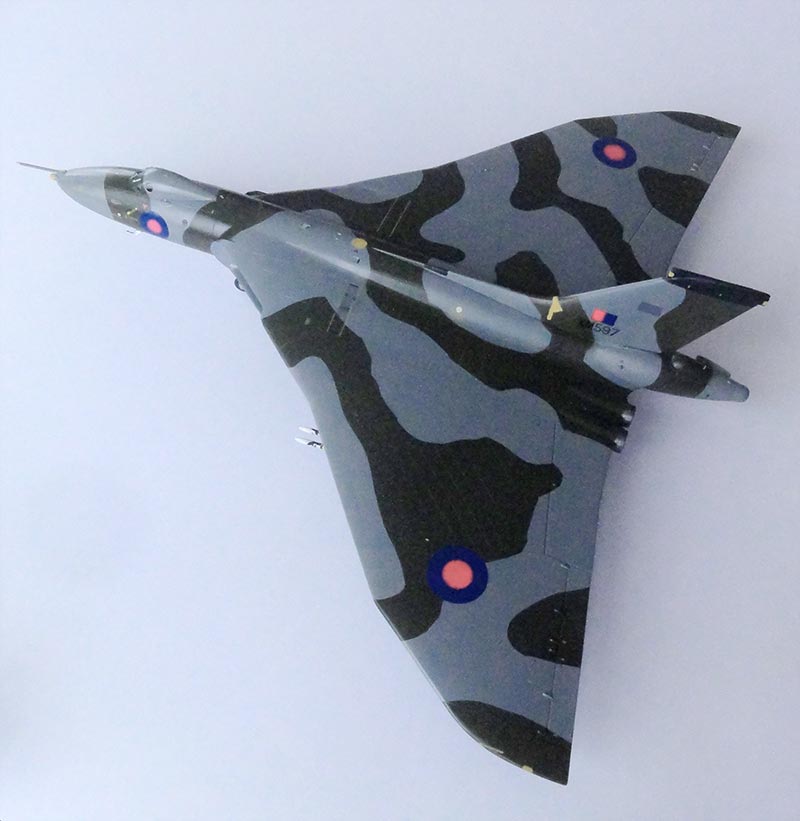
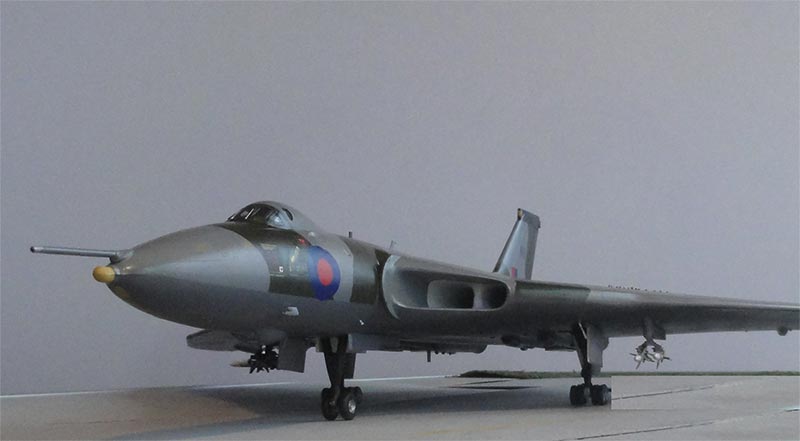
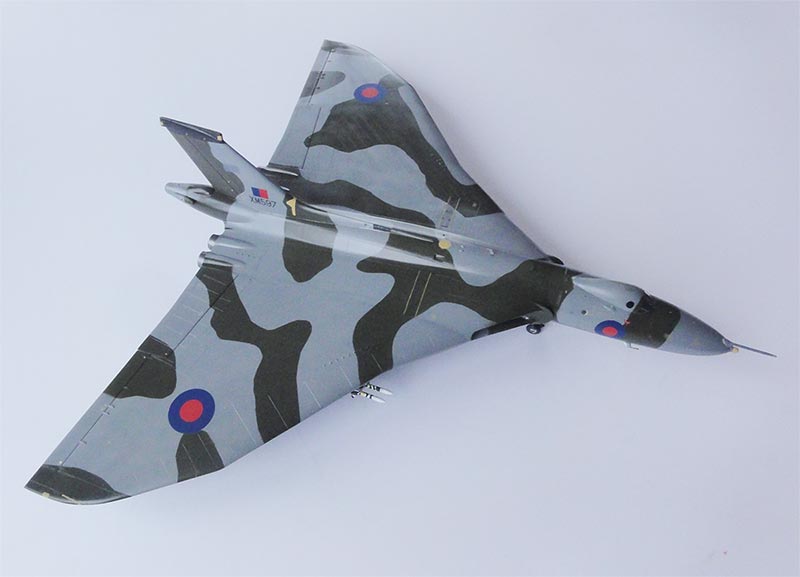
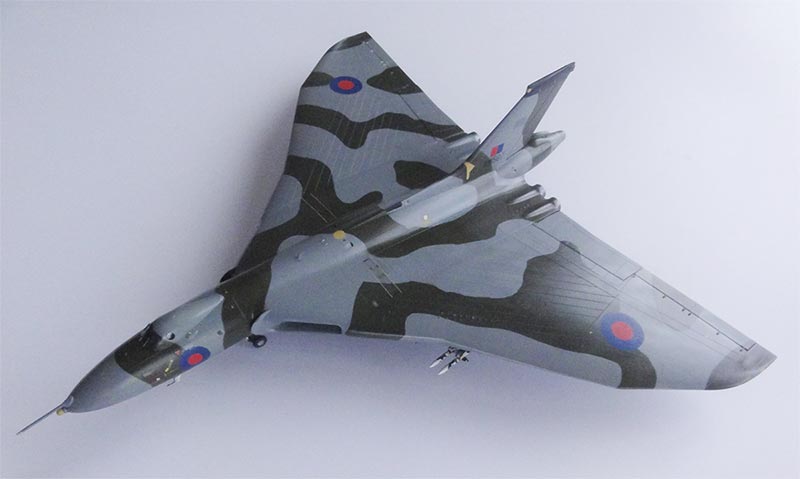
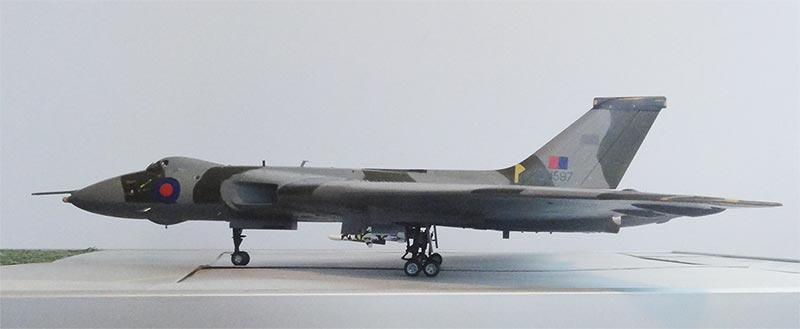
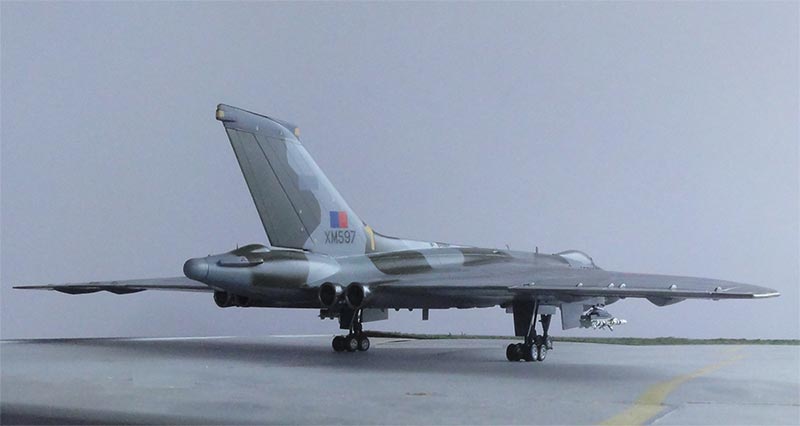
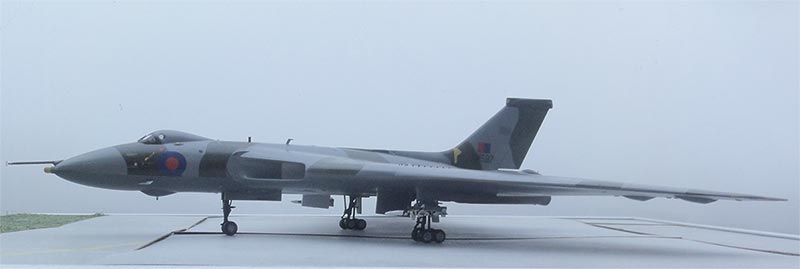
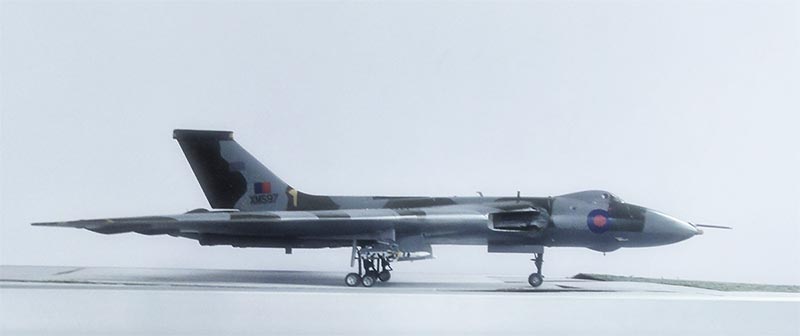

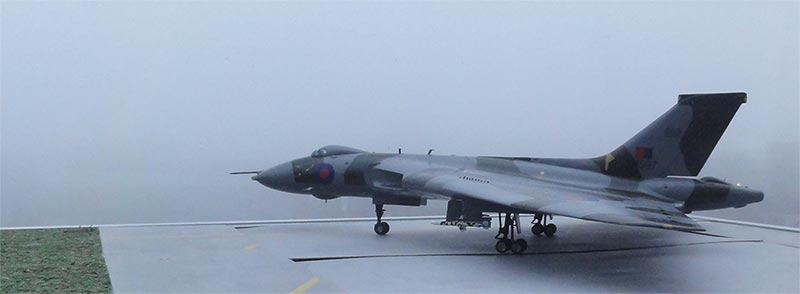
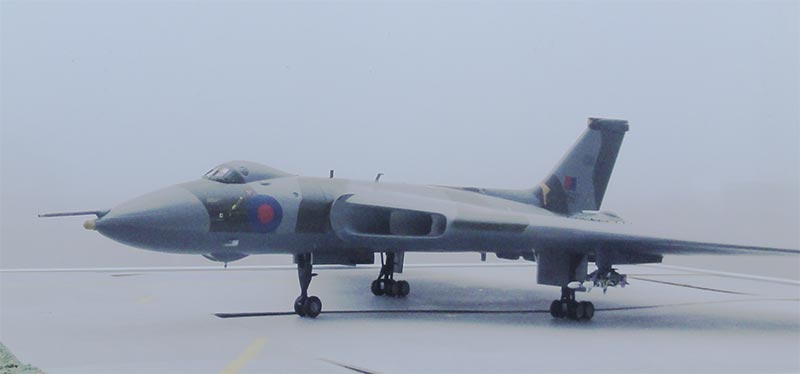
... model "situated before take-off at Ascension island, Wideawake field" with the photo editor...

... en route....
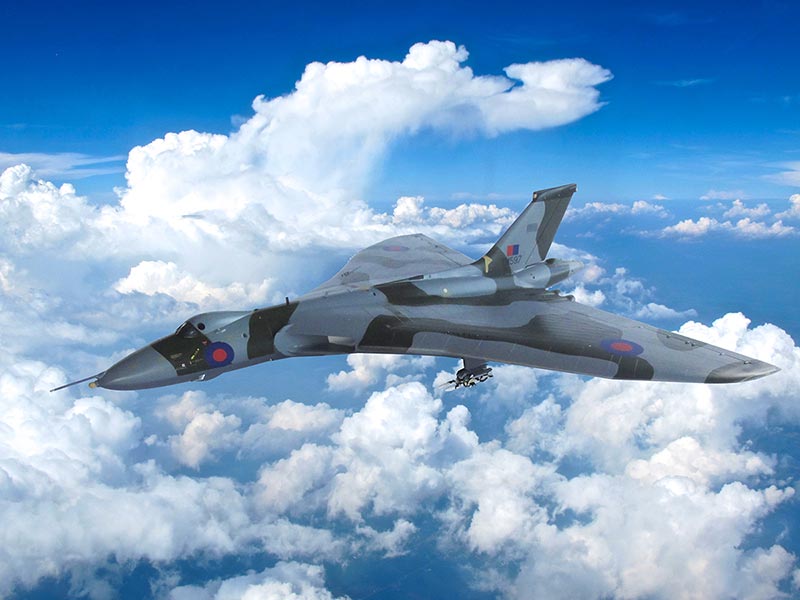
... and after the strike at the Falkland after the diversion flight after damage occurred with the tank boomset landed at Galeão Airport, Rio de Janeiro, Brazil with 1 Shrike ....
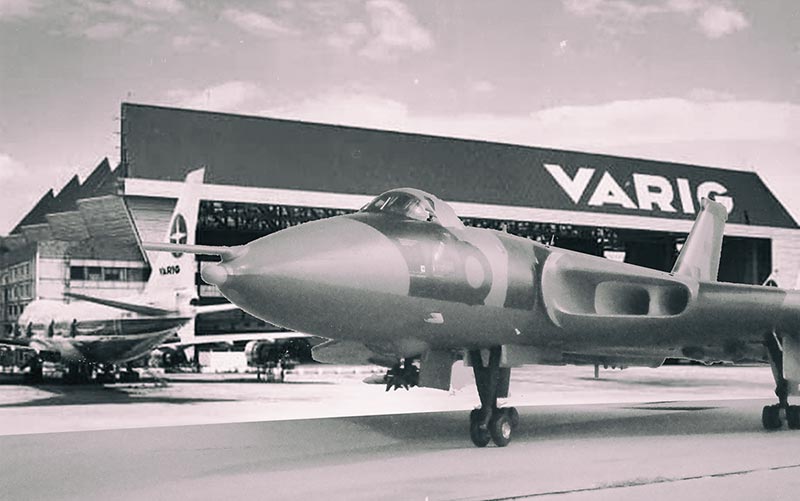
A historical pair of Vulcans are now proudly in the model collection.
See also my made Brazilian model of F-5E Tiger II fighter from 2° Esquadrão do 1° Grupo de Aviação de Caça scrambled from Santa Cruz Airfield that intercepted this Vulcan.
Back to 1/72 Models
(c) Copyright Meindert "designer"/ All rights reserved. Your comments are welcomed by webmaster
Created June 2, 2022